Why Your Concrete Pots Crack (And The Fix!)
Do your DIY concrete planter pots keep cracking? There are 5 reasons why that can happen, and how you can prevent it!
So your concrete pots crack, and you’re pulling your hair out trying to figure out why.
Cracking is typically the biggest issue when making things with concrete and cement.
Whether it’s countertops, patios, planters or concrete crafts. But I have really good news, hairline cracks in cement planters can be prevented.

5 Reasons Your Cement Pots Are Cracking
Reason 1. Cracking Caused From Too Much Moisture

Some of the links on this page have been provided as a convenience for finding materials. These links may also be affiliate links. As an Amazon Associate I earn from qualifying purchases, at no extra cost to you.
I only recommend products I’ve used and loved, unless otherwise stated. Click here to read my full disclosure policy.
The first and most common reason your concrete planter pot cracked is because the mix contained too much water.
The more water that is in the mix, the better the chance that as it evaporates, the concrete will shrink.
Concrete by nature will shrink, but the extra water can cause it to shrink too much or quickly.
When it has excessive shrinkage, it has nowhere to go and the pressure from cement contracting against itself will cause cracks.
Typically these types of cracks are hairlines, but they can also crack right through.
They can sometimes be repaired by making a thin mix of cement and filling in the crack. With a little bit of sanding, you may be able to conceal the crack.
The solution for crack prevention is reducing the amount of water in the mix, which can sometimes pose a challenge. This can happen if your mold has narrow cavities, then it may require a thinner and more fluid mix.
You may want to read this post for more on concrete and cement crafts techniques.
You can avoid adding extra water by using an additive. These additives provide more flow, or fluidity without the need to add more water.
Many concrete and cement manufacturer’s sell additives for this, that work with their mixes.
The one I’m familiar with is Cement All’s cement mix and the additive is called Flow Control.
Reason 2. Climate Conditions During Curing Causes Cracking In Concrete Pots
You can end up with cracking if the weather conditions are windy or very dry when your concrete pot is curing.
This is essentially the same problem as too much water in the mix. The wind and lack of humidity are causing the concrete to shrink quickly, forcing it to crack.

Please click the button to subscribe to my YouTube channel and be notified when I have a new video tutorial!
The easiest solution for preventing the concrete from losing too much water is to wrap it in plastic while it’s curing.
You can even mist it with water first and then wrap it if you want to play it a bit safer.
Using plastic to keep in moisture is what is referred to as wet curing.
Please see my *Note below about my projects and wet curing.
By the way, if you are looking for some ideas for plants that you can keep in pots outside during winter, I found 17 cold hardy plants that are great for this.
Reason 3. The Type Of Mix Used Caused Deep Cracks Or Completely Broken Pieces

It’s important to choose the right mix for your project because not all concrete mixes are suitable for every size or shape of a planter.
Some mixes are smoother, but some have quite a bit of aggregate. Some can be quite desne and some are very lightweight.
Not all mixes work the same across the board.
To understand more about mixes, I recommend reading my article about the differences between cement and concrete mixes.
An example of a poor choice of a mix based on the mold is when I made the concrete pot pictured above.
I had made a silicone mold for a planter and cast a few of them without any problems.
Some types of silicone molds are more durable than others, which also means that demolding them may be tougher.
The photo above shows a concrete pot that cracked due to the choice of mix. I wanted my concrete planter to be white and there was only one white concrete mix that I could find locally. This was a mortar mix called Glass Block Mortar Mix– by Quikrete.
The mix wasn’t dense enough to withstand the pressure it underwent when I removed it from the mold.
However, this mortar mix did prove to be a great fit for this marbled green planter.
This is because this planter mold was larger with thicker walls, as well as wide and shallow, so it didn’t cause problems when demolding.
Make sure you choose the right cement mix for your project.
Reason 4. Old Expired Mix Causing Crumbling In Concrete Pots

If a concrete planter crumbles and breaks into multiple pieces when you demold it, then the likely reason is a bad bag of mix.
Concrete mixes are made of chemicals that have reactive properties. These reacting agents that allow them to ‘glue’ together, will only last so long before they lose their binding ability.
If the package has not been opened, then the concrete mix is good for about 6 months to a year.
Once the bag is opened, even with proper storage (cool dry conditions and sealed airtight), the mix may last less than six months.
If it’s not properly sealed, then it will lose its ability to bind in only a few months.
Reason 5. Issues With The Concrete Pot Mold
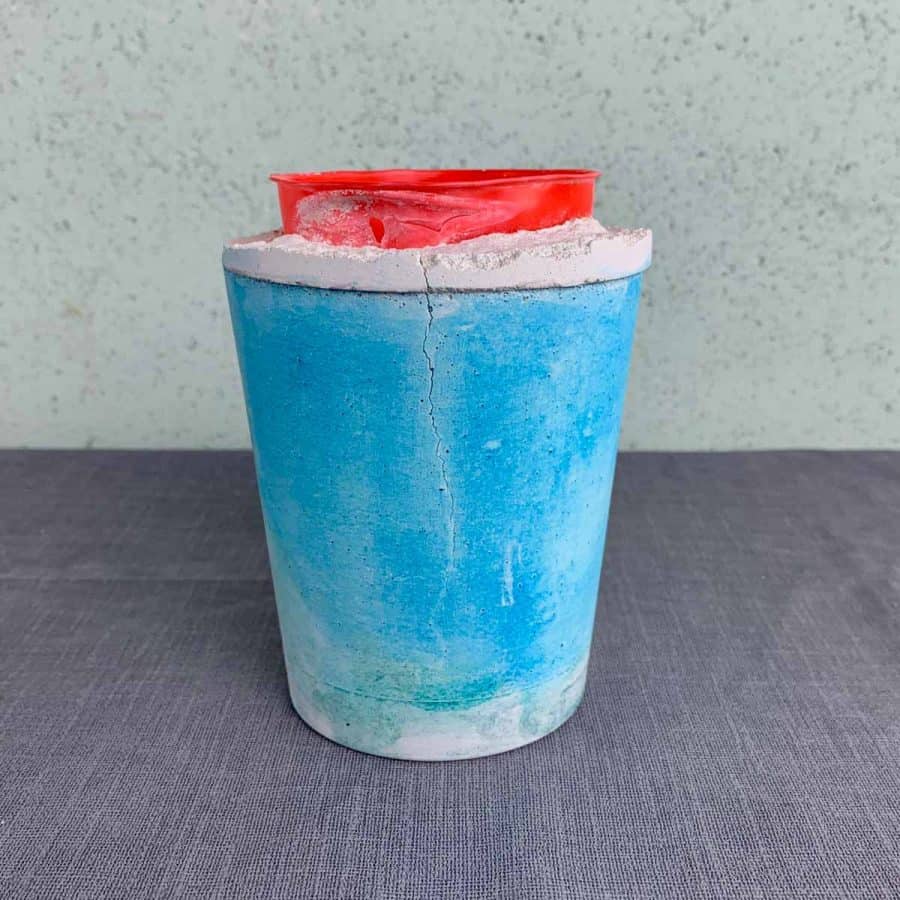
This one is usually pretty obvious, but it’s the reason I’ve experienced cracking with concrete pots.
The inner mold is usually what is likely to cause this. If your mold is deep and not wide, then trying to remove an inner mold piece can apply a great deal of pressure on the cement.
I’ve started making my own inner molds to combat this problem, which can add to the making time. But I can be very much assured that I won’t accidentally crack my pots when removing them from the molds.
Note: It’s important to know that for the use of smaller concrete crafts, you shouldn’t need to water cure your pieces very often.
As of the date of my writing this article, I have not experienced cracking in my planters due to shrinkage. Nor have I needed to water cure any of my concrete planters.
That being said, I live in the southern U.S., and days with super low humidity are not common.
In addition, my pieces are cured in a garage and not exposed to wind.
Manufacturers formulate their mixes to meet specific demands.
While some mixes may experience a higher chance of shrinking, there are compounds in them that meet other requirements that a low-shrinkage mix may not have.
Which again, is why it’s important to understand the concrete mix and which is the best choice for your concrete planter project.
You can find detailed information on how to make concrete planters here.
Don’t forget to Pin it for later!
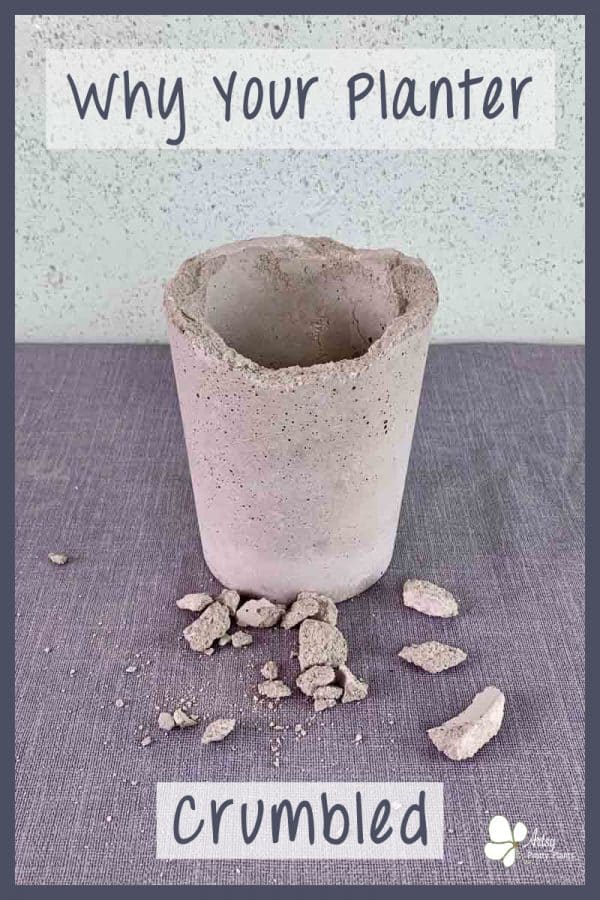
Don’t forget to Pin it for later!
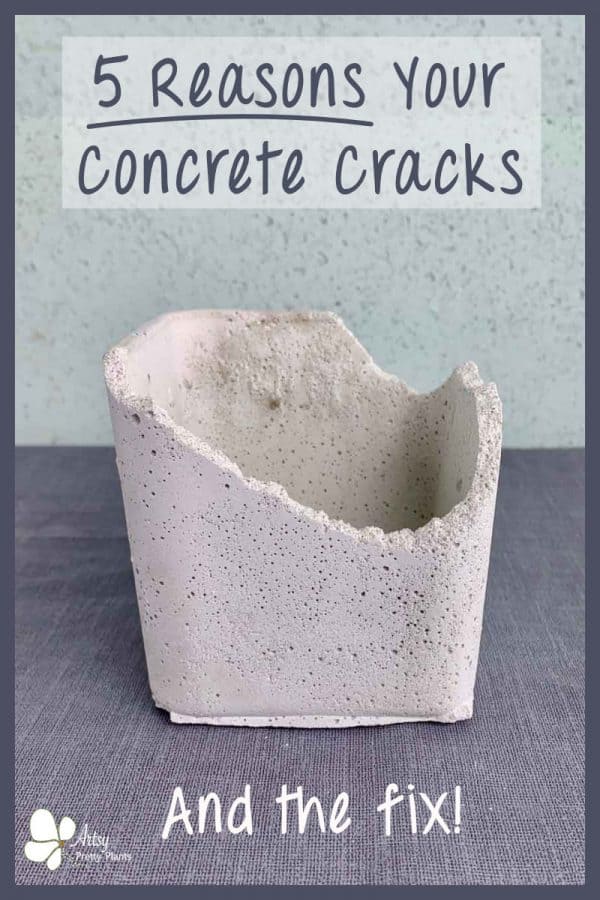


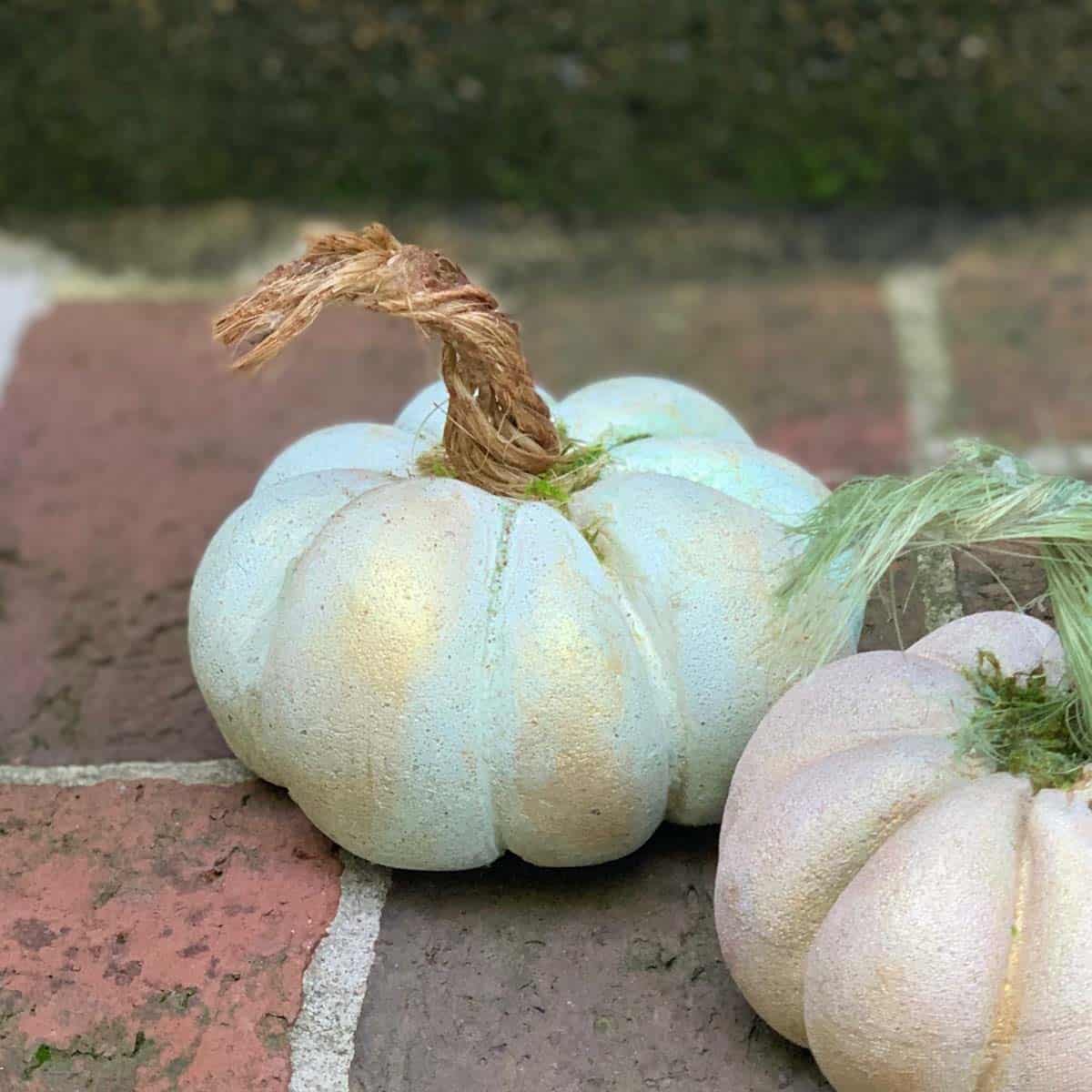
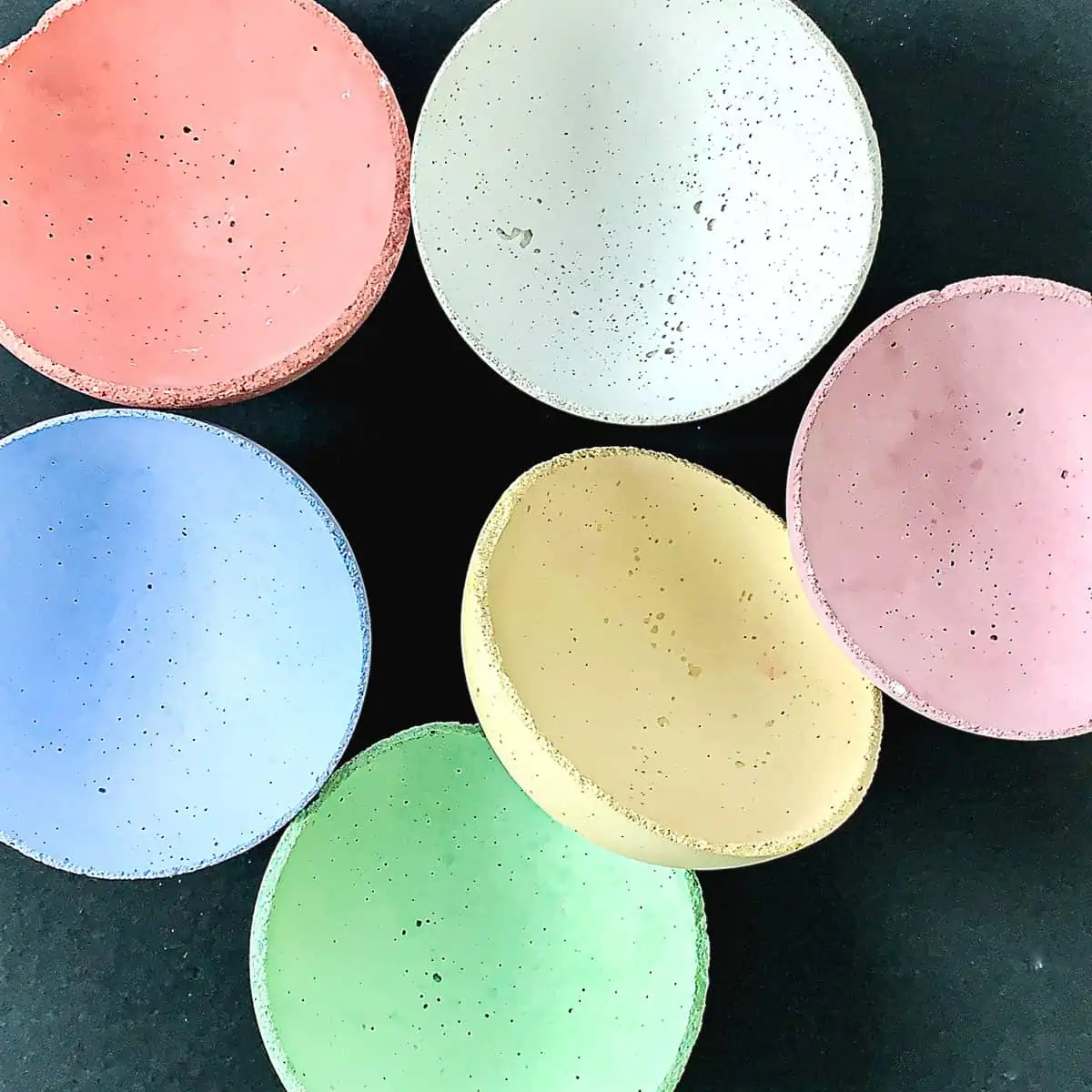


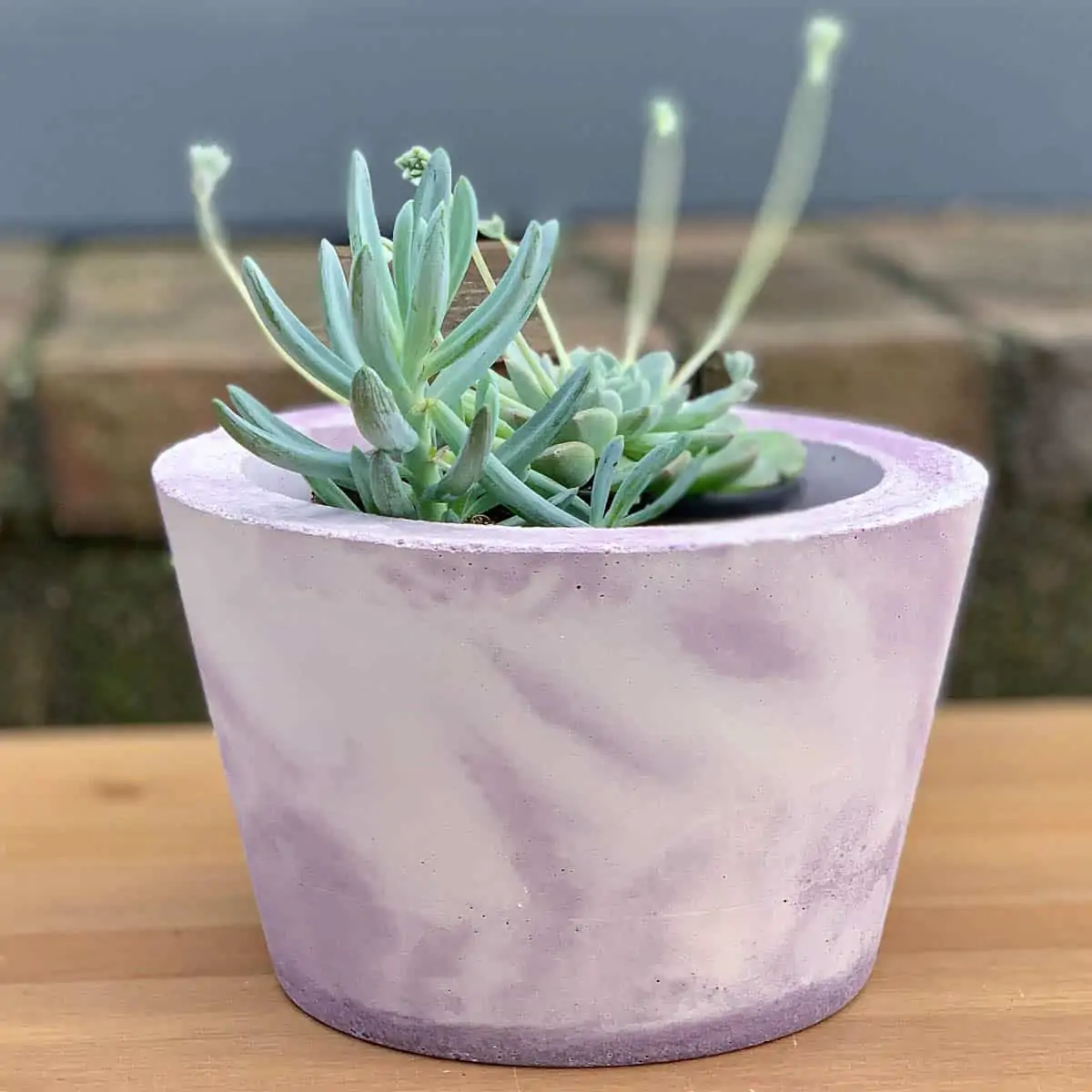
Hey, I’ve been trying to make pots but I have tried misting and bagging, water baths everything but my pots always crack once I’ve filled them with soil they could be made a month even 3 months and absolutely fine qnd crack free until I put soil in, what am I doing wrong??
Hi Samantha,
The only thing I can think of is that the mix may have too much water in it from the beginning? Always use the least amount of water possible to get it the consistency needed to be able to make it workable enough to fill the cavity of your mold.
What mix are you using? Make sure IF you are using a Portland cement mix, that you are adding sand to it. It always needs sand added- or another type of aggregate.
You should be able to find cement all in the UK (looks like you are there?). I highly recommend that mix. I have never had it had it crack, unless I have demolded it too early, in which case, it will crack right away. It cures typically in one hour.
Hi, jumping into this thread! I am in the UK and can’t find cement all anywhere – I don’t think it exists here…so I’m completely clueless as to what to buy!
Hi Naomi,
Cement All is supposedly available in the UK. http://www.rapidset.co.uk – the site is not working at the moment, but the US CTS/rapidset (maker of Cement All) tells me it is available there.
Also, there’s a product called Polycell’s QuickSet Cement, which I believe is somewhat similar.
Hi Ellen, I’ve been following you for the past year, and I was never more excited. I’ve been working with cement about a year and a half and it’s been a hit or miss challenge but when I read your articles the light came on!! I started on one project by using a coconut planter (the ones that hang up) and w/o the coconut hair of course lol! I turned it over and put it on a pvc pipe , put plastic over it, then started with my material overlapping the pieces then I tucked the ends of the pieces under for the top. Boy I hope I explained that good enough ugh,! It came out so good! When I took out the plastic and mold it looked like a birdbath!! It was perfect. I painted and sealed it But in a short while it started to flake off pieces I added extra cement repainted and sealed But it’s doing it again!!! What am I doing wrong, HELP!!
Cathy in Texas
Hi Cathy,
Yeah, it still is hit or miss for me sometimes too. I think that’s the nature of the beast. :0)
Do you mean you used fabric and the cement became brittle and flaked off? If so, then your mix was probably too watery. You may need to try making the mix with less water. I have made two planters with fabric and had that problem with one and that seemed to be what the issue was.
I’ve just finished making my second lot of pots from pvc pipes. The first lot crumpled taking out the inner tube and after giving your tips a read I may be up for the same results tomorrow. haha. Good to know it was a water issue though, if tomorrows pots don;t work out I know what I can try to remedy it. Cheers, from Australia!
Hi Megan,
I’m not sure your issue is a water issue, but hopefully it is. I worry about using PVC as the inner mold, or even the outer. They’re too rigid and will likely cause cracking when demolding. Only once did I try to make a planter using a PVC pipe as a center mold and never again. They are impossible to remove, unless you remove them before the cement is fully cured, but then you’re also at risk of cracking them just because the cement isn’t cured. I would try to find something else to use.
What size diameter are these? If you can, use a straight water bottle, or a cardboard mailing tube. Here we can get them 4″ wide. Line it with acetate film to get it smooth or you’ll have the diagonal line from the cardboard show through. Good luck.
Thanks for the awesome info! I’ve been frustrated with my cracking concrete. We just completed a massive home renovation including a hardwood floor refinishing and I just wanted to finish it all up with some nice plants in a homemade concrete pot. I’m gonna have to get back to the drawing board with your info and make the pot the right way. Thanks again for sharing.
Hi:) If i use 3 parts cements with one part sand- how much water should i add?
thank you
email- [email protected]
Hi Michal,
Unfortunately, it’s hard to say. It depends on what you are making and what you need the consistency to be. For instance, I’m guessing if you are doing 3:1 then you must be making something with thin walls? Then you will want a brownie batter consistency. The amount of water depends on the humidity and temperature of where you are. You just need to add enough to get it to the brownie batter consistency. I don’t ever measure my water, I just am concerned with getting the consistency correct. A general rule of thumb according to many manufacturers is 4:1, but that’s often with gravel involved. So, like I said, there’s no good answer for this.
Hi Ellen,
I am very excited to have found your site. I purchased several large latex molds for planters, as well as a few hard plastic molds and even larger fiberglass and steel molds. The information you’ve provided will help me to solve a few problems that I have been having, but I am wondering when to use steel mesh or rebar? Some of the larger planters have a diameter of up to 24”.
Thank you.
Nick Yager
This is tricky to answer. It depends on the mix you use, wall thickness and you say “diameter” –are these all round or are some square/rectangular. I’ve never made a project large enough to require reinforcement. The bigger you go, the thicker your walls need to be. When they get quite thick, you need reinforcement. Rebar shouldn’t be needed for a planter, I wouldn’t think. You aren’t going to go wrong by adding mesh. Also, some mixes aren’t strong enough for some projects and will absolutely need reinforcement. Make sure you use the appropriate mix.
Try to find someone on youtube who has made a project your size and see what mix they use and if they used reinforcement. https://www.youtube.com/@MichaelBuilds is one good resource, so is https://www.youtube.com/@DIYCreators/
I don’t want to steer you wrong, since I haven’t tackled this. However, this post will help you with mixes, if you haven’t seen it yet. https://artsyprettyplants.com/best-mix-for-concrete/
I hadn’t seen MichaelBuilds before, so I checked out a few of his videos and will try Rapid Set Mortar Mix with Flow Control and see how it goes. I’ve been using the mix described by Rubber Mold Man on YouTube until I found your site. His mix is Portland cement to Sand to Pea Gravel of 1:2:1 with 1 part water. Very soupy and I’m getting a lot of descaling. Looking forward to trying what I’ve learned from your site and also the Rapid Set Mortar Mix with Flow Control – thank you!
Thank you so much for your informative info as I was about to repair a porch and love the idea of making planters. I have the flow product for art pours and a great tip. Also old cement opened why nots… moisture barriers, etc.